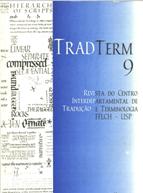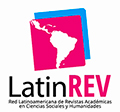Procedimentos tradutórios mais freqüentes em textos jurídicos, corporativos e jornalísticos
DOI:
https://doi.org/10.11606/issn.2317-9511.tradterm.2003.49077Keywords:
Legal translation, corporate translation, journalistic translation, contrastive analysis, text typology, corpus-based translation research.Abstract
This study adopts a methodology for establishing the prevailing strategies employed in translating legal, corporate and journalistic texts from English into Portuguese. The descriptive-comparative model suggested by Aubert (1984, 1977, 1998) adapts the categories proposed by Vinay and Darbelnet ([1958, 1977]1995). We used this model in order to first identify then analyze, through statistical calculations, the specific procedures (or translation modalities) that characterise the process of translating these text genres. The most common modalities in all three text types are found to be literal translation (as in powers of substitution at any time/poderes de substituição a qualquer tempo); obligatory transposition (as in export viewpoint/ponto de vista da exportação); and modulation (as in can react/tome providências). Modulation occurs more frequently when translating legal texts. While literal translation is correlated with corporate and journalistic texts, modulation and transposition with modulation (as in an old fashioned kind of place/um local meio antiquado) are found to correlate with legal texts.Downloads
Download data is not yet available.
Downloads
Published
2003-12-18
Issue
Section
Translation Procedures
License
Autores que publicam nesta revista concordam com os seguintes termos:
- Autores mantém os direitos autorais e concedem à revista o direito de primeira publicação, com o trabalho simultaneamente licenciado sob a Licença Creative Commons Attribution BY-NC-SA que permite o compartilhamento do trabalho com reconhecimento da autoria e publicação inicial nesta revista.
- Autores têm autorização para assumir contratos adicionais separadamente, para distribuição não-exclusiva da versão do trabalho publicada nesta revista (ex.: publicar em repositório institucional ou como capítulo de livro), com reconhecimento de autoria e publicação inicial nesta revista.
- Autores têm permissão e são estimulados a publicar e distribuir seu trabalho online (ex.: em repositórios institucionais ou na sua página pessoal) a qualquer ponto antes ou durante o processo editorial, já que isso pode gerar alterações produtivas, bem como aumentar o impacto e a citação do trabalho publicado (Veja O Efeito do Acesso Livre).
How to Cite
Camargo, D. C. de. (2003). Procedimentos tradutórios mais freqüentes em textos jurídicos, corporativos e jornalísticos. TradTerm, 9, 75-91. https://doi.org/10.11606/issn.2317-9511.tradterm.2003.49077








